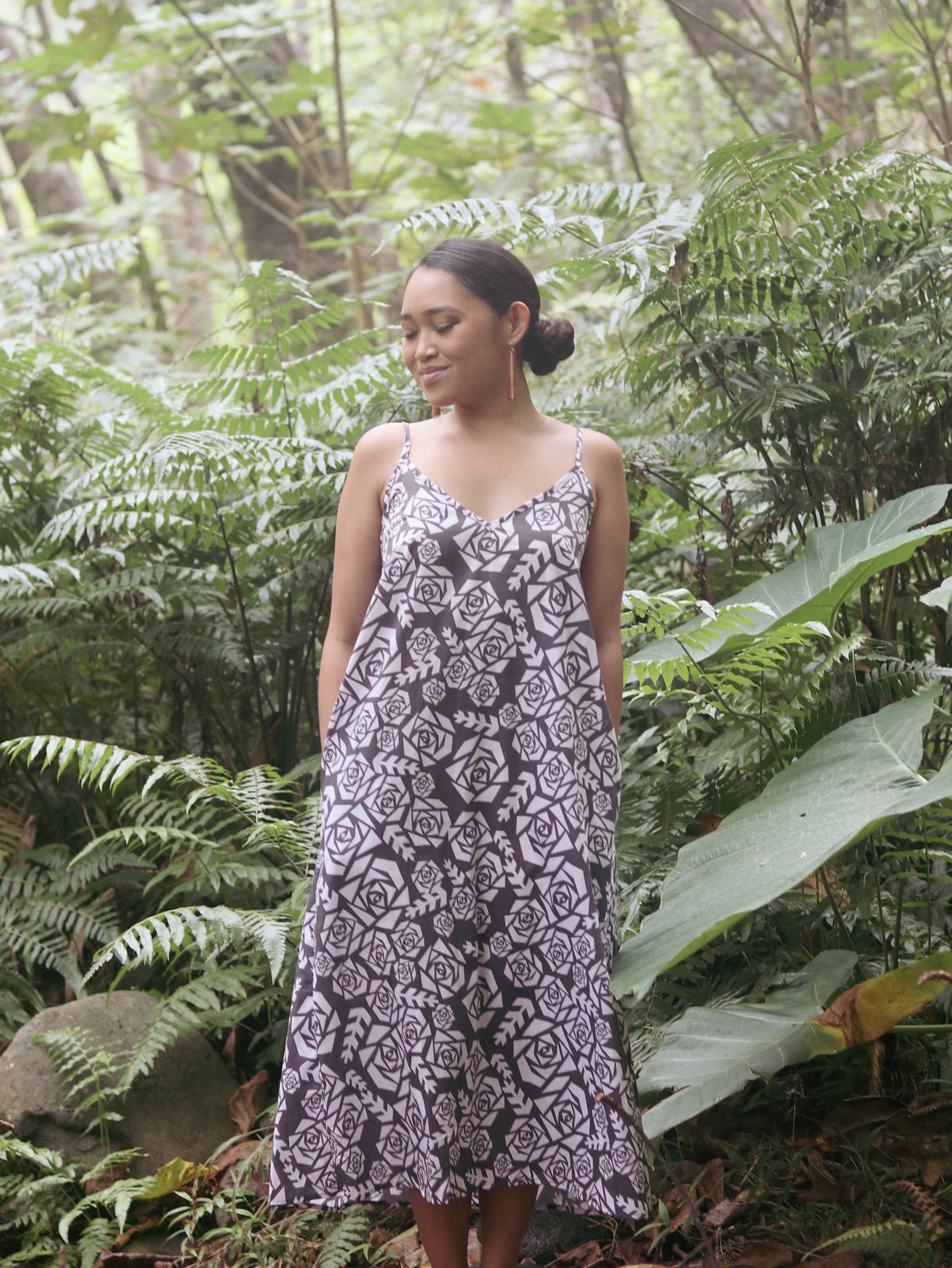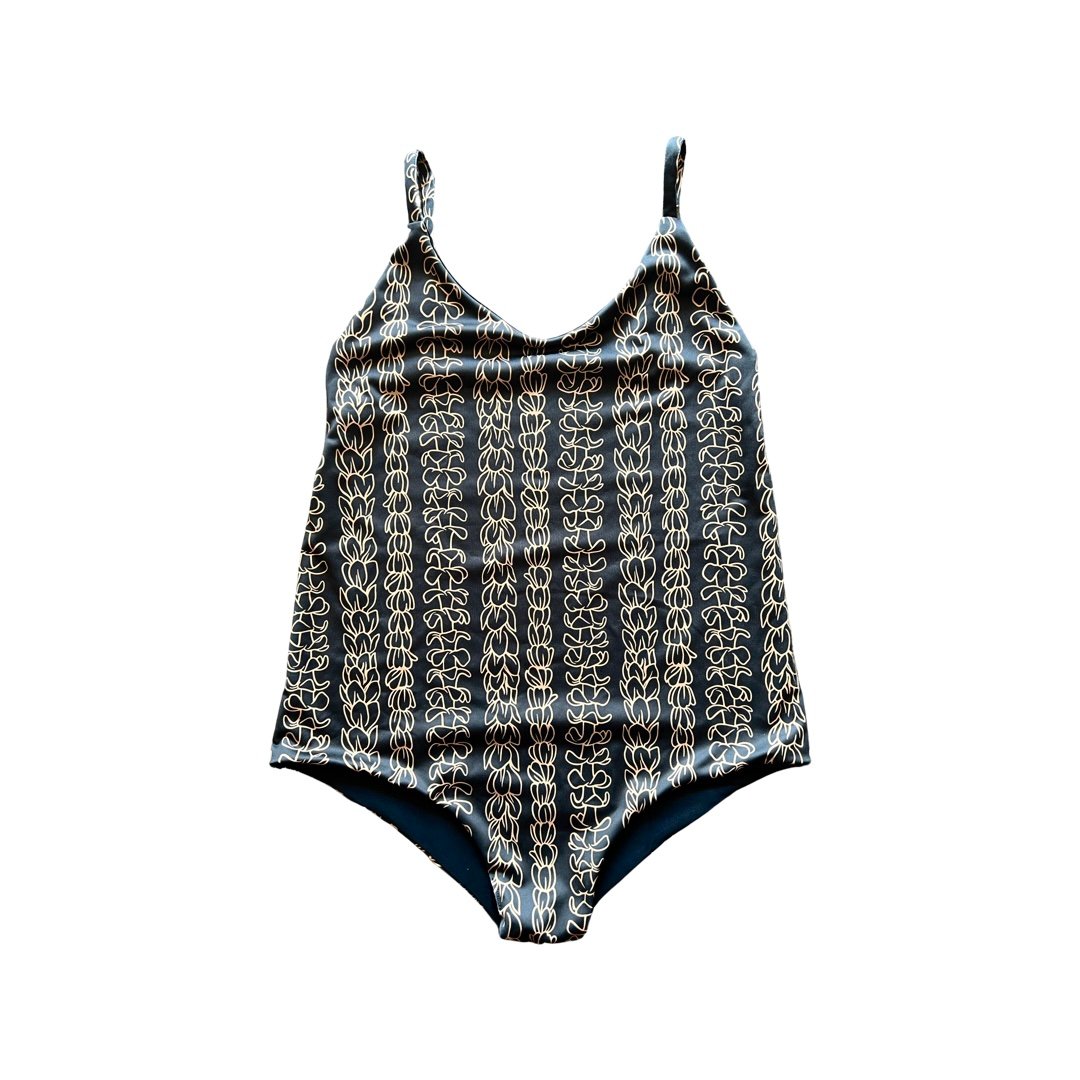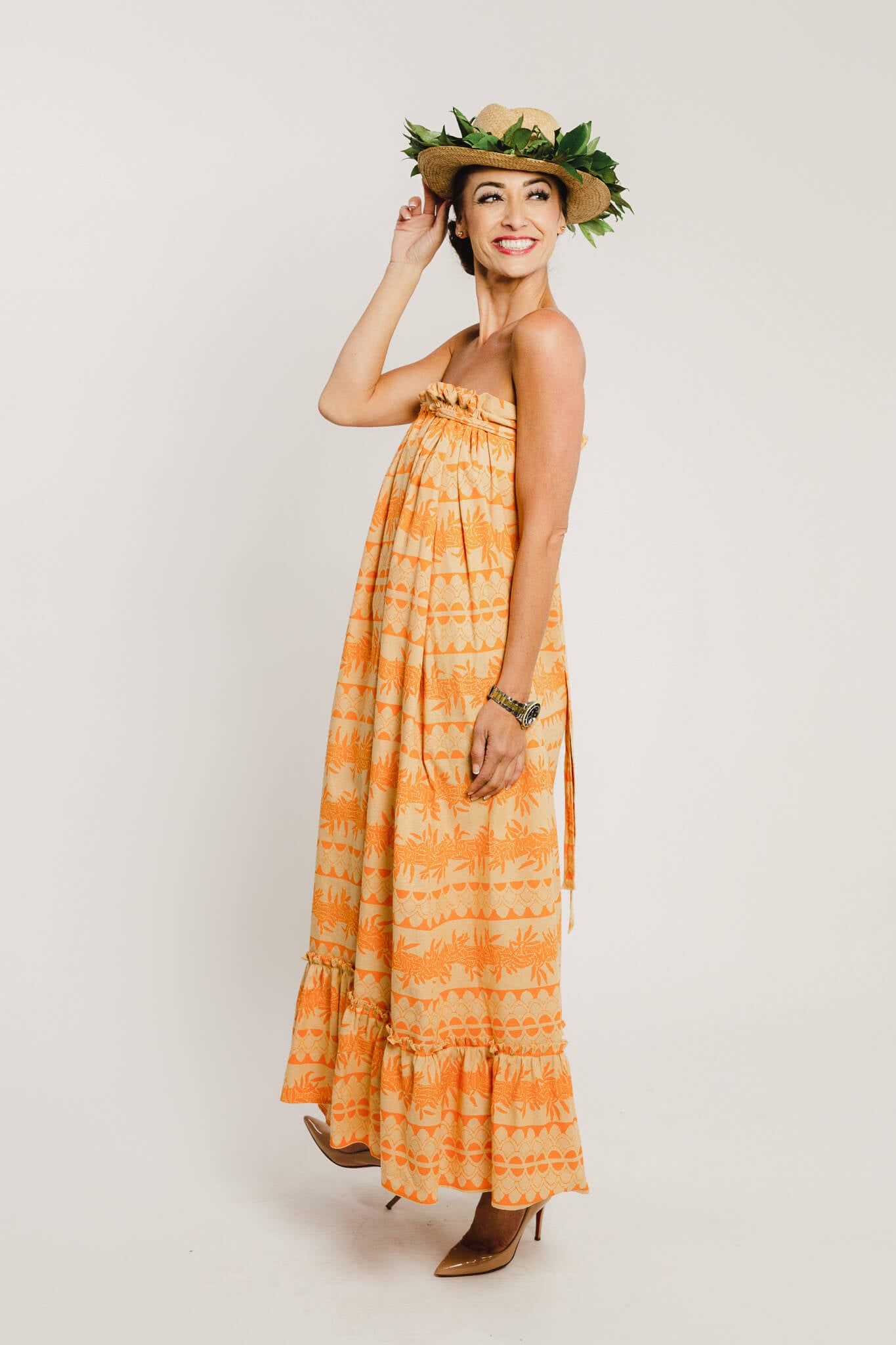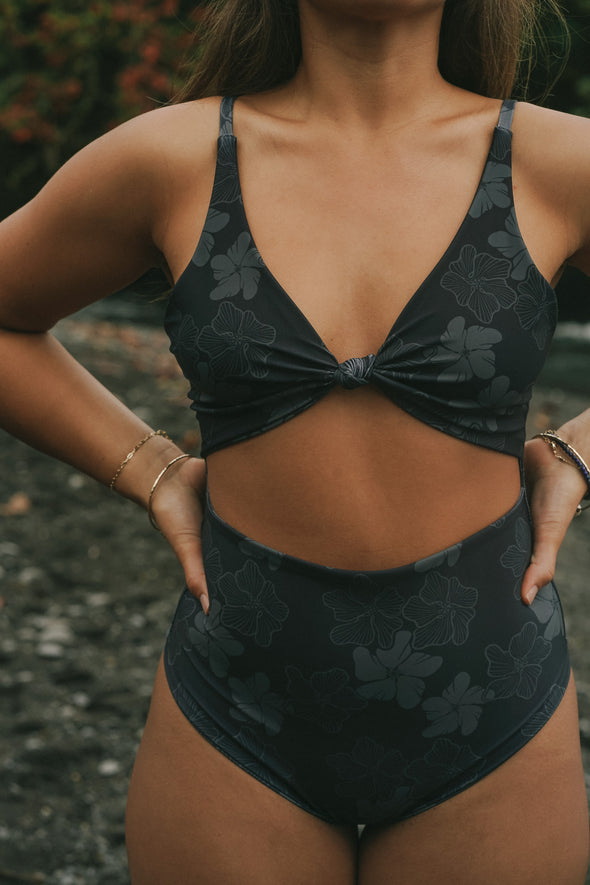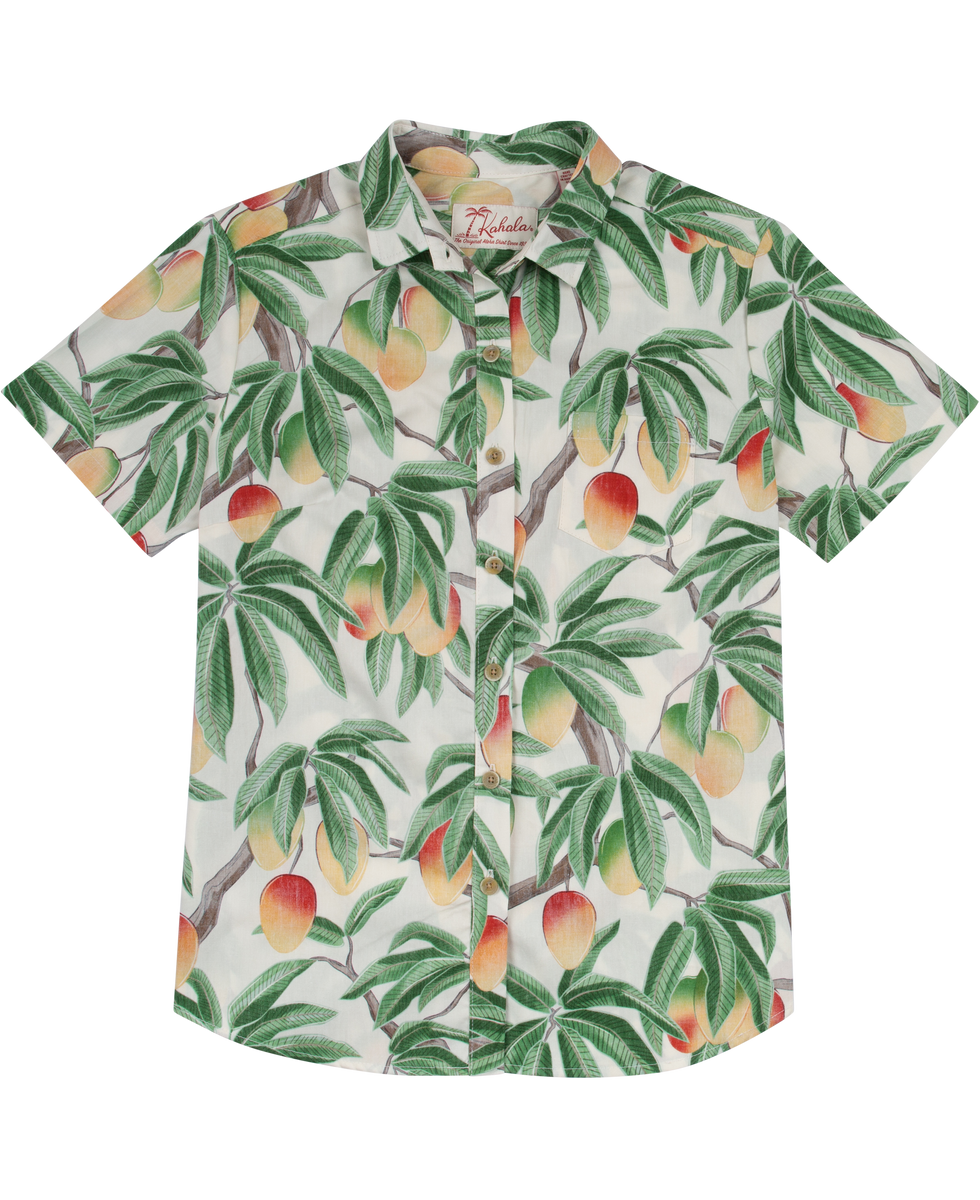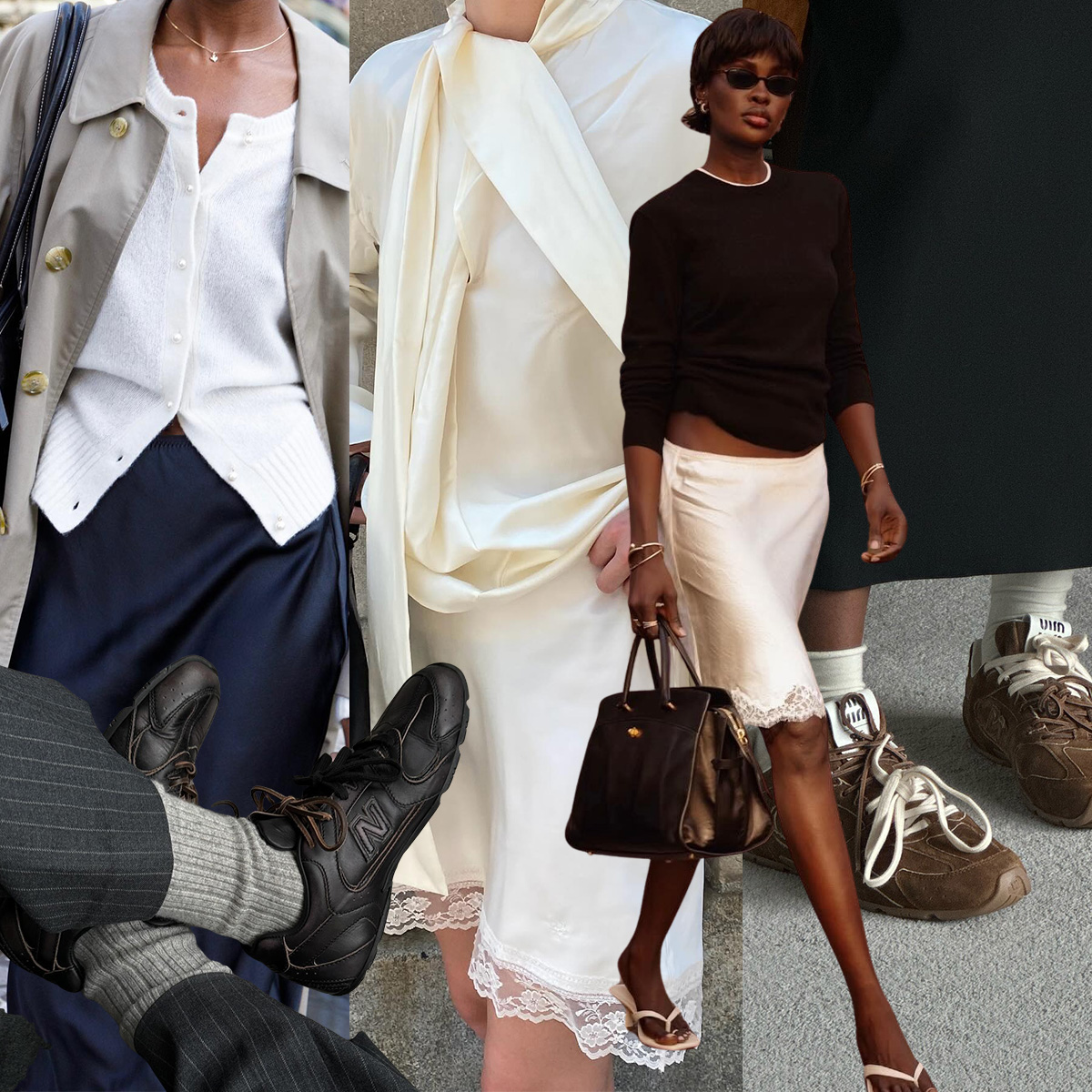Meet the Designers Reclaiming the Aloha Shirt as Their Own

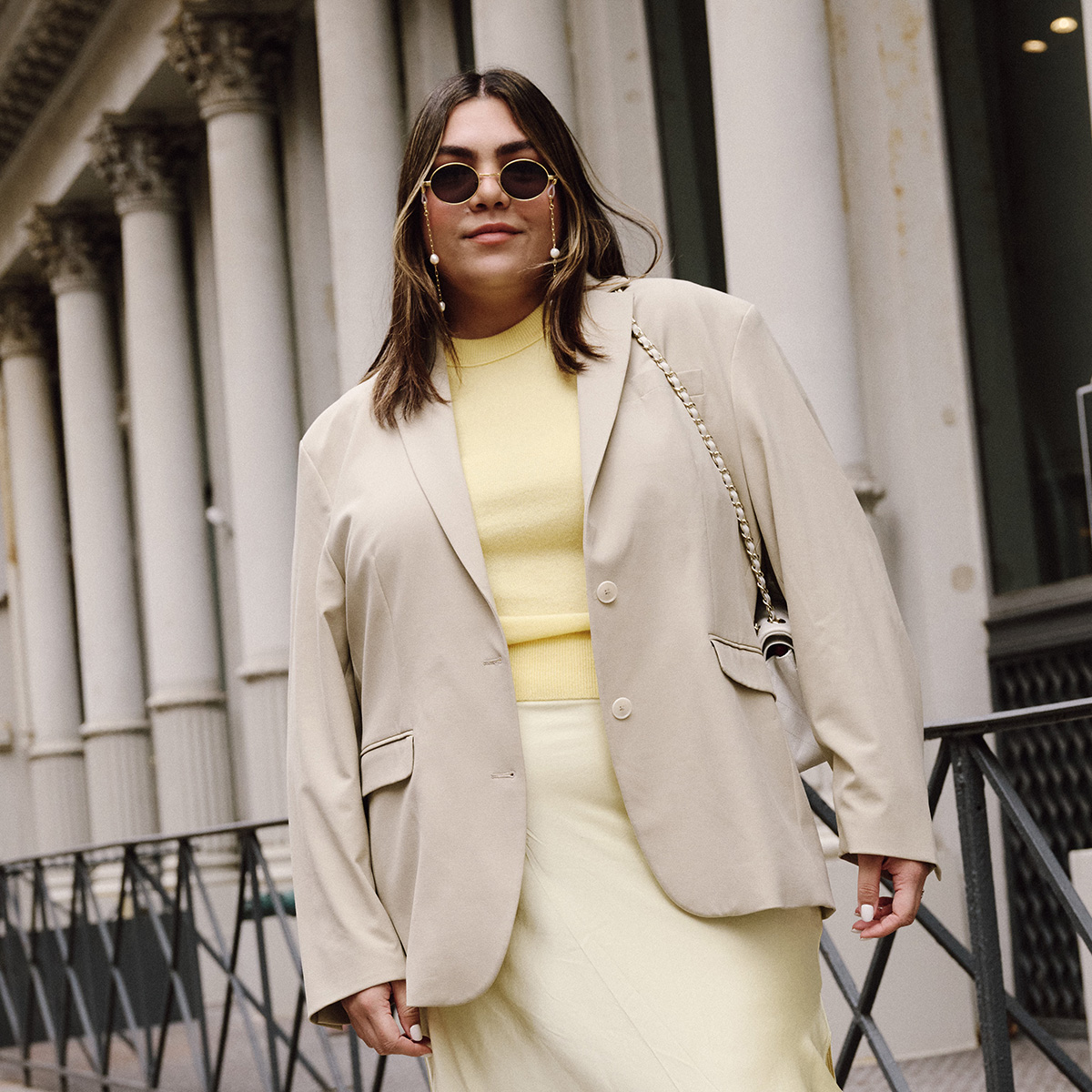
Bailey’s Antiques and Aloha Shirts is a quaint, coral-colored building facing one of the busiest golf courses in Honolulu, Hawaii. It’s nestled near the five-star resorts and luxury-goods shops lining the Waikiki Beach strip in O’ahu—a contrast when you’re staring at the tanned Betty Boop graffiti art. She’s wearing a lei and a green grass skirt.
David Bailey’s namesake shop has been in business for over 43 years now, providing tourists and locals alike with the latest and greatest aloha shirts. (Perhaps it’s a nod to the unofficial golfing uniform for tourists putting on the green less than 300 feet away.) Inside, thousands of shirts line nearly every square inch of available space—flung on racks and chairs and nestled high on walls out of reach. There’s a print for everyone, Bailey tells me, from pineapples to palm trees and coconuts. While Bailey says he has between 200 to 300 shirts he wears every day (and often rotates out when his wife gets tired of them), the store carries over 15,000, with more coming in daily.
The majority of the world associates sunset-colored hibiscus-print shirts with corny dad jokes and the smell of hot-dog water during overly warm summer days, but today’s iteration of the aloha shirt found on fast-fashion websites is a mere comical interpretation of Hawaii’s rich, artisan-led design scene. In a world where cultural appropriation seems to rear its ugly head every summer season as more and more luxury design houses take inspiration from Polynesian and native Hawaiian culture for resortwear and travel-adjacent clothing capsules, Hawaii’s blooming fashion scene is reclaiming the aloha shirt as something that’s entirely their own. News flash: Alohawear, and the community-driven designers taking back its power, is more than just a Halloween costume or kitschy destination souvenir—it’s sacred.
"I think the idea always with aloha shirts is if you want one yourself, research the brand and see if they’re … doing the design in a way that pays homage to its tropical and travel origins—i.e., don’t treat it like a disposable souvenir and buy a fast-fashion knockoff,” editor and stylist Diana Tsui tells Who What Wear. She’s gotten lost in Bailey’s racks on her trip to Honolulu while visiting friends. It’s not a hard feat when you walk in and feel like the store is about to burst with the number of vintage gems piled on top of each other. Of course, she reminds me, it’s always better to support local designers if you’re able to. For the majority of the American public, however, it’s not really a conscious choice. When the temperatures reach above 70°, it feels like you can walk into any big-box retailer and find at least one or two inspired styles cheaply (and most likely unethically) made. That’s not an accident, by the way.
While I’m speaking on the phone to Bailey, he divulges that, on more than one occasion, he’s spoken with people visiting the shop and learned that they’re representatives from major fashion labels visiting Hawaii who stop by the store, buy up merchandise, and promptly re-create it. Within the industry, the practice is known as inspiration trips—often taken by design teams to repurpose and copy original work that’s already been created by a smaller, usually lesser-known brand. Tsui tells me the same.
"[A famous design house] borrowed like 10 of our shirts and then made copies. They were only sold in Paris, Tokyo, and in our store,” Bailey reveals. "They wanted to give me like $5000, and I said, ‘No, give me 10 of each shirt that you’re making, and I can sell them myself.’ That was in 1999.”
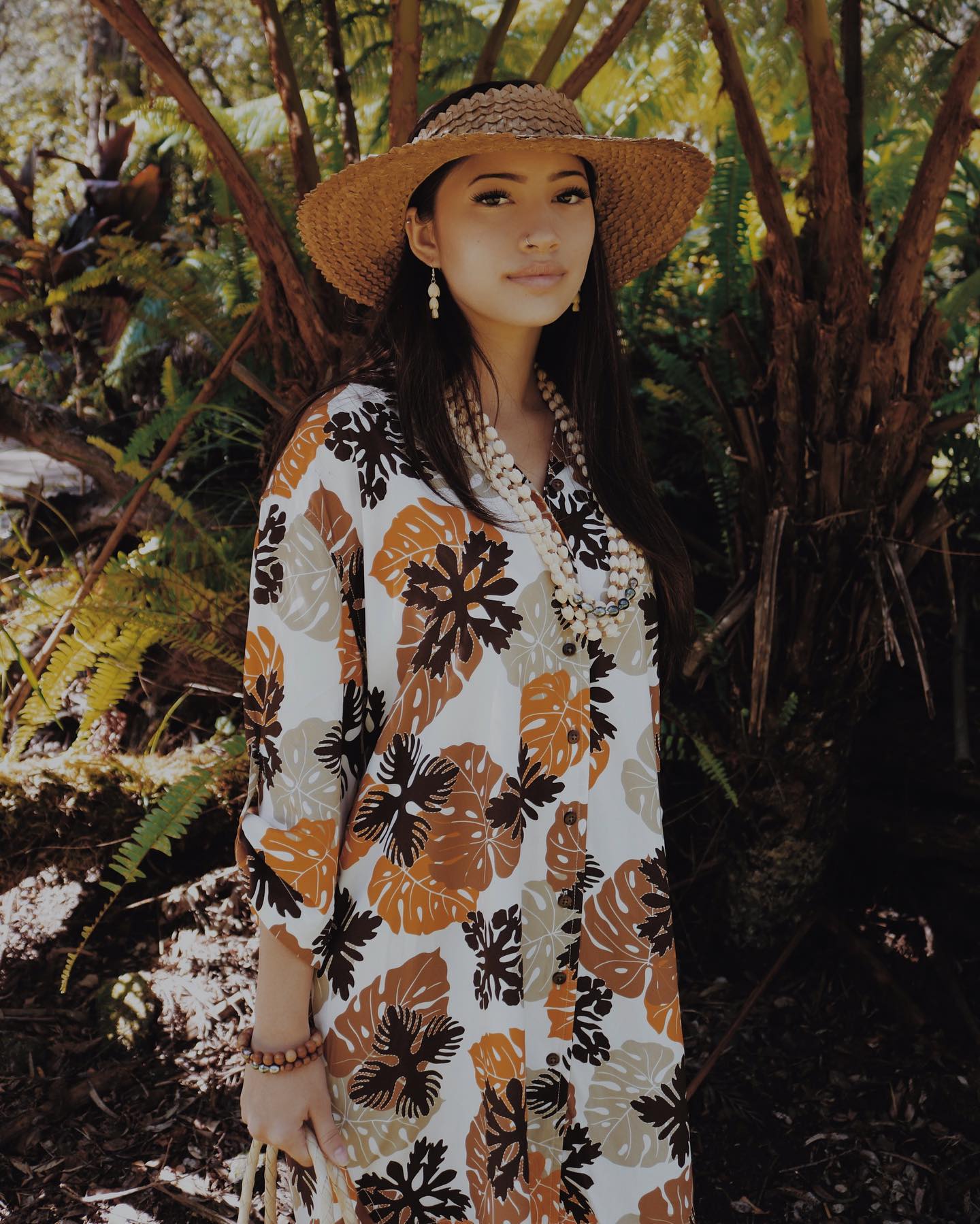
It’s widely believed that the aloha shirt as we know it today began circulating almost a century ago in the 1920s and 1930s—mostly handcrafted by East Asian immigrants reimagining traditional prints on Western-style garments. "Some people say it was a Japanese retailer. Others say it was a Chinese-owned shop in Waikiki. Whatever the origins, it represents the diversity of Hawaiian locals,” Tsui explains. There’s a belief that the aloha shirt stems from native Polynesian and Pacific Islander culture, but its newer origins are more closely aligned to the wider Asian diaspora found on the island—mostly stemming from locals whose families emigrated to Hawaii from countries such as the Philippines, Japan, and China.
The bright button-down blossomed into a cultural export throughout the late ’30s and into the ’50s—both brought about by Hollywood stars wearing aloha shirts on the covers of movie posters and by army servicemen returning to the mainland after being stationed on the Hawaiian islands during World War II. By the time the ’60s came around, aloha shirts had made it big into the hearts and minds of haole—or non-native Hawaiian people. Richard Nixon even had one tucked away in his closet at the White House. The fascination was born and promptly cemented into the minds of the American public as a tropical destination–worthy garment worn on casual Fridays at the office and during backyard barbecues. But like most things, the aloha shirt’s history goes back much further than that $18 red-and-green knockoff you’ll find while browsing Amazon’s "tropical outfits” section.
"When a customer visits our stores, our staff really try to share the story of each print so that the wearer can create a bond with the shirt and proudly wear it, knowing it isn’t just some shirt from a Hawaiian vacation,” Tom Park, director of Kahala, tells Who What Wear. Kahala is one of the oldest alohawear brands on the island, starting operations in 1936. It’s a badge the brand wears with honor, tracing back its history as being one of the first labels to mass-produce the garment within Hawaii’s local economy. Park explains the design process in detail, relying on a set of skilled artisans and designers to tell stories through their shirts—whether they be new designs based on in-season fruit or ones pulled from deep within the brand’s 87-year-old archives. It all goes back to the art, Park says. "If the art is not genuine, it can easily come across as ‘tourist tacky,’ he tells me. "That’s not to say you can’t wear and love a shirt strictly based on the design. If the art and colors resonate with you and you just like the way the shirt looks, there’s nothing wrong with that.”
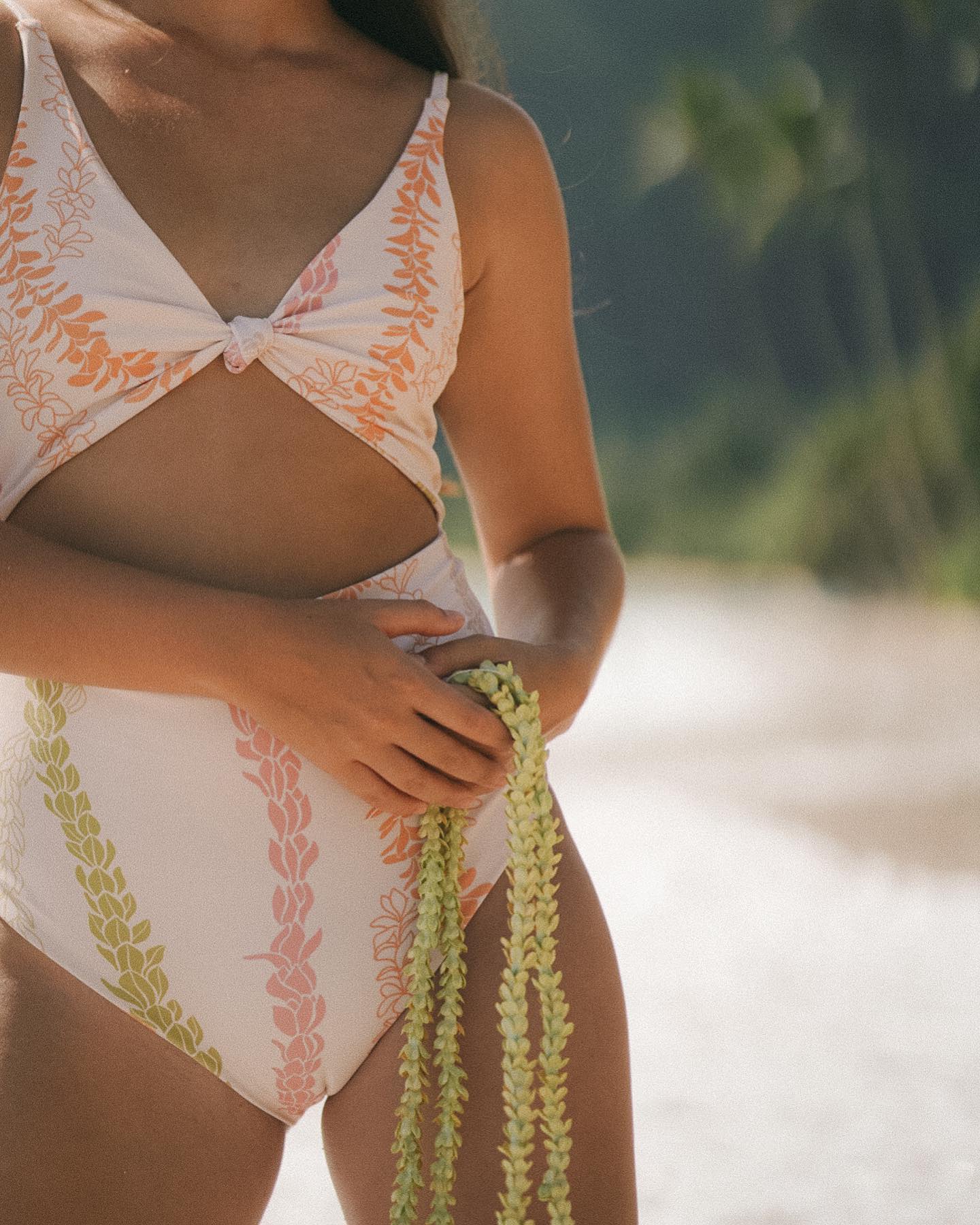
What really defines alohawear from a native Hawaiian point of view is the process and thought that goes into it, Anna Kahalekulu, designer of small-batch clothing brand Kūlua, tells Who What Wear. "It often gets reduced to a specific motif or craft, but that’s really not it. It’s that we see ourselves as part of ʻāina, not as on ʻāina. So we often choose to adorn ourselves in elements of our land to further this thought,” she explains. Kūlua began after Kahalekulu noticed there was a gap in the fashion market in Maui. Her background as a hula practitioner informs a lot of her designs, bringing even more nuance to an already culturally embedded garment. "My approach to fashion is very similar—I design first by thinking of how a garment will adorn a wahine and what sort of things she can take with her throughout her day to stand taller [and] feel more grounded and ready to take on her day,” Kahalekulu says. "In hula, we adorn ourselves with specific lei to connect to place and embody what those plants mean to us. And through fashion, we do much of the same thing at Kūlua.”
Alohawear, like most craftsmanship practices originating from Hawaii, has deep roots in nature. There’s no shortage of beauty on the Big Island, designer and seamstress Maui Marks tells me. She started her label, Hāna X Swimwear, with the intention of placing Hawaii at the center of everything she does. Everything from the prints she designs to the manufacturers she works with is all intentionally thought out, she explains. "Most recently, I designed a print that was an ode to my hometown of Waimea, Hawaii, which incorporates the prominent ’ōhi’a lehua flower,” Marks tells Who What Wear. As with most locals, Hawaii is more than just where Marks calls home—it’s a living, breathing account of everything her, her family, and her community has ever experienced. For Marks, designing simply isn’t enough: "[We have] to educate and be educated about Hawaii in hopes that it changes the perspective [that non-locals have] and adds value to products that are truly authentic to the native Hawaiian culture.”
Over the last few years, more and more eyes have been on Hawaii—particularly its local communities struggling to deal with rising housing prices, inflation, and the environmental impact of thoughtless tourism. During the COVID-19 pandemic, a surge of videos flooded TikTok urging mainland residents to not come to the islands and treat it as their personal playground, a warning that’s since gone ignored by Instagram-conscious travel vloggers and hoards of digital nomads hoping to experience a bit of the laid-back lifestyle Hawaii is known for. Pair that with uninformed tourists buying up cheap, inauthentic aloha shirts created by fast-fashion brands, and the entire escapade feels like a slap in the face to a community with an already painful history of unwanted negative attention from outsiders. For locals, reclaiming the aloha shirt as their own—and not just a brightly colored garment worn by fraternity boys during alcohol-filled tailgates—is a significant, mighty act to fend off attempts at modern-day colonization and cultural appropriation.
"The most important thing you can do to support local native Hawaiian artisans and designers is to understand that we come from a beautiful, rich history that was oppressed,” Kahalekulu says. "We’ve been in the process of reclaiming and understanding our own culture for the last couple of generations. We’re now in a place to shine, thrive, and set a new tone for the next generation.”
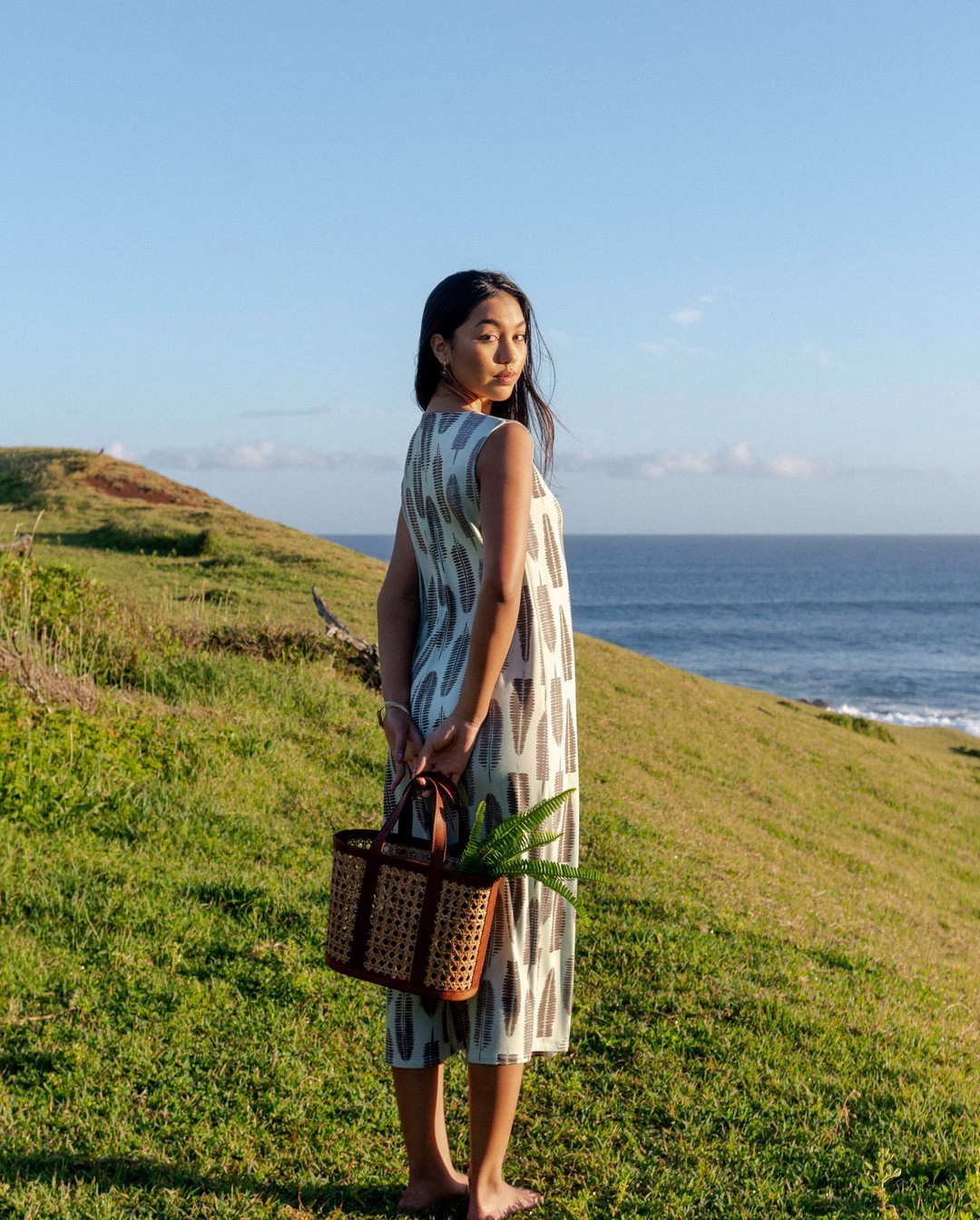
Nowadays, more and more community-driven female designers are creating a world in which the aloha shirt is purely their own. Indigenous flora and fauna prints aren’t just pretty tropical elements to add to bikini sets sold along with tiki-themed shot glasses and 50 SPF sunscreen. They’re yet another way for locals to keep their culture alive in a world that feels like it’s constantly trying to reduce it.
For Mariah Toledo-Tavares, the founder of Kalokini x Kalokane Swim, her entire brand feels like an act of resistance. "I feel like we help make that truth come to life by having a meaning behind each print and why we wear them and what they mean to us as the people of Hawaii,” she explains. As a young brand, keeping things in-house as much as possible is at the center of Kalokini x Kalokane, and Toledo-Tavares uses a small studio shed next to her house to design her brand’s swimsuits and alohawear. As with other local designers, the rising cost of goods and services in Hawaii means that she has to export the production of her dresses and shirts to other countries. It’s a business she’s come to juggle on her own for the most part, as she doesn’t come from a technical background in patternmaking, sewing, and textile design. Regardless, Toledo-Tavares says the rising community of Hawaiian designers making a name for themselves means there’s always someone supporting you. "[We have to] encourage and uplift each other in the local artisan community. I feel like that’s where a lot of business owners thrive and succeed—when we all come together and support each other and our individual talents,” she says.
Nearly every designer interviewed brought up another brand they knew—another reminder that the small but mighty local fashion industry is always in a state of unwavering, undying commitment to each other. In some ways, the design scene scattered throughout the islands is a small family, constantly showing up for each other in the comments section. It’s in stark contrast to the cutthroat, high-stakes fashion industry found in the lower 48 states. For Hawaiian designers, it doesn’t feel like it’s about competition. At the end of the day, it’s community.
While it’s incredibly important to uplift and vocalize the stories of Hawaiian designers, the majority of small brands and business owners Who What Wear spoke to all agree on one thing: shop local. In a fashion ecosystem that relies heavily on pushing hyperfast bikini and beachwear trends that often evoke Indigenous Pacific Islander imagery, think twice about who’s getting your support at the end of the day. With a growing industry fueled by a sense of place and passion, the best thing to do is to put your money where your mouth is.
Shop the brands:

Ana Escalante is an award-winning journalist and Gen Z editor known for her sharp takes on fashion and culture. She’s covered everything from Copenhagen Fashion Week to Roe v. Wade protests as the Editorial Assistant at Glamour after earning her journalism degree at the University of Florida in 2021. At Who What Wear, Ana mixes wit with unapologetic commentary in long-form fashion and beauty content, creating pieces that resonate with a digital-first generation. If it’s smart, snarky, and unexpected, chances are her name’s on it.
-
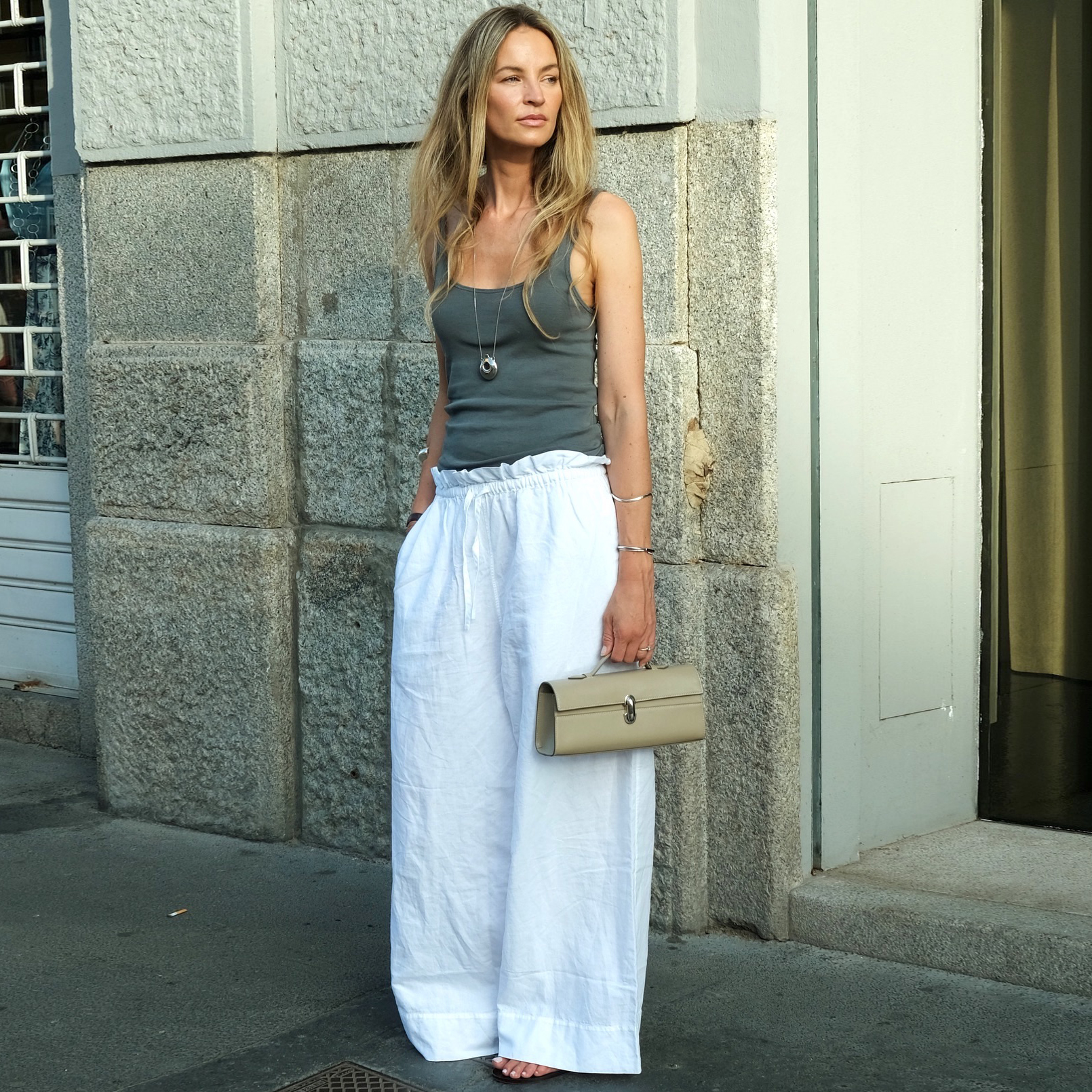 Zara's Linen Collection Is Top-Notch—27 Pieces That Have My Attention
Zara's Linen Collection Is Top-Notch—27 Pieces That Have My AttentionThe pants alone are worth checking out.
By Jennifer Camp Forbes
-
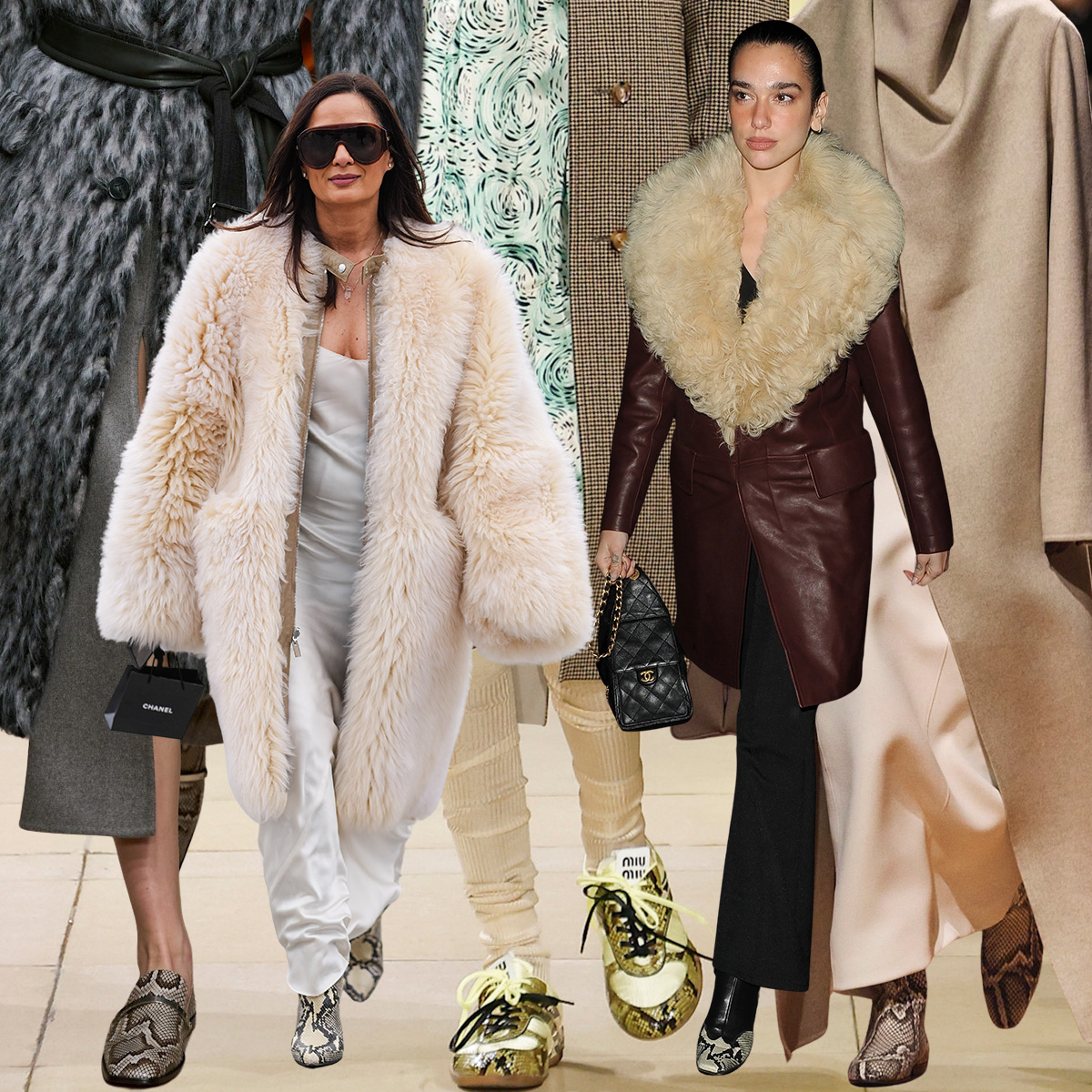 Sorry, But Fashion People Are Already Ditching Leopard-Print Shoes for This Elegant Alternative
Sorry, But Fashion People Are Already Ditching Leopard-Print Shoes for This Elegant AlternativeHere are the receipts to prove it.
By Nikki Chwatt
-
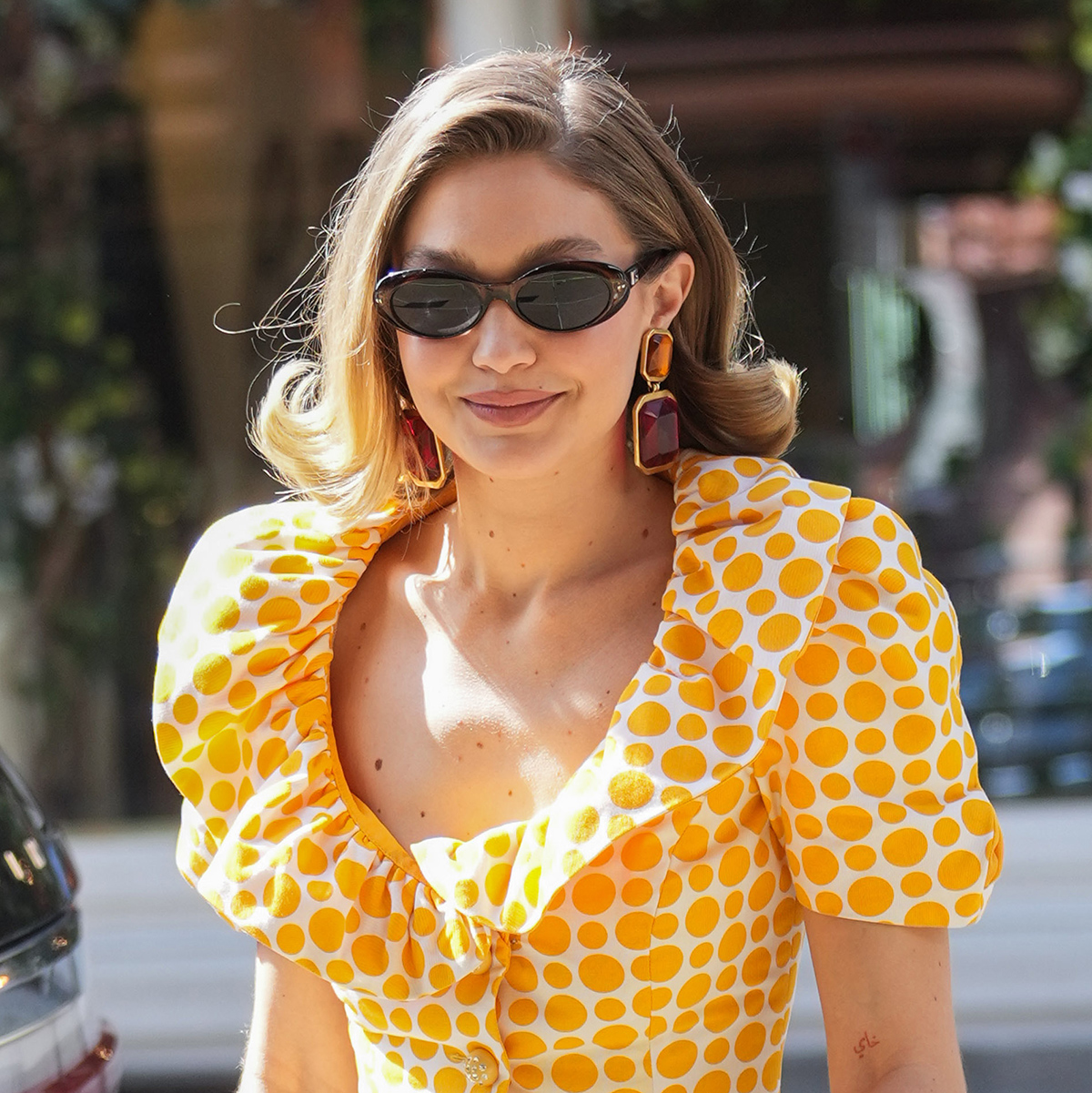 Every Cool NYC Girl Will Wear This Pretty Shirt Trend With Jeans and Flats in April
Every Cool NYC Girl Will Wear This Pretty Shirt Trend With Jeans and Flats in AprilIt's a 10 out of 10.
By Allyson Payer
-
 Step Aside, Leopard Print—This Is Unquestionably 2025's It Print
Step Aside, Leopard Print—This Is Unquestionably 2025's It PrintAlaïa and Zara both agree.
By Anna LaPlaca
-
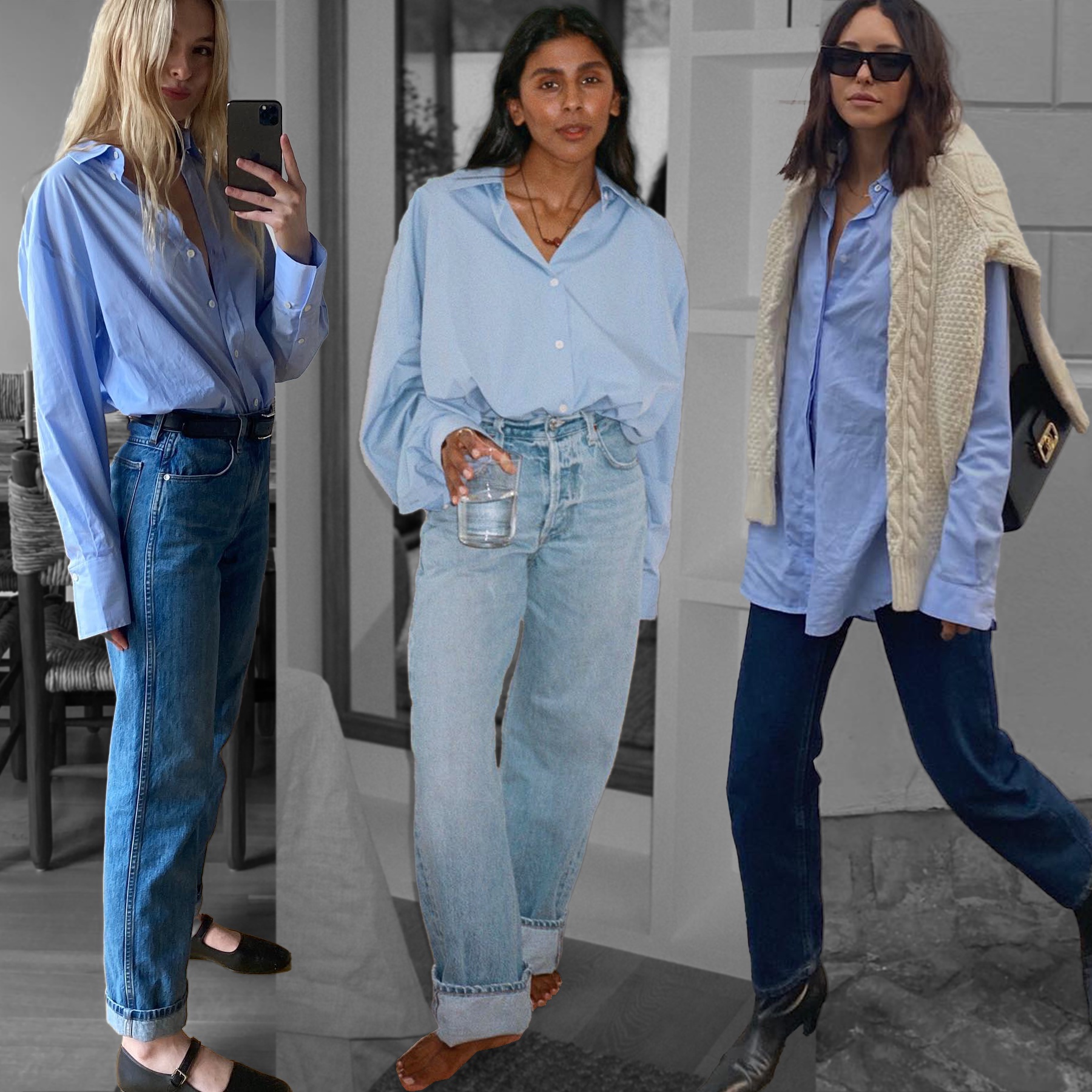 I'm a Fashion Editor—I Reach For This Effortless Wardrobe Essential When I Don't Know What to Wear
I'm a Fashion Editor—I Reach For This Effortless Wardrobe Essential When I Don't Know What to WearHere are nine easy ways to style the piece.
By Jennifer Camp Forbes
-
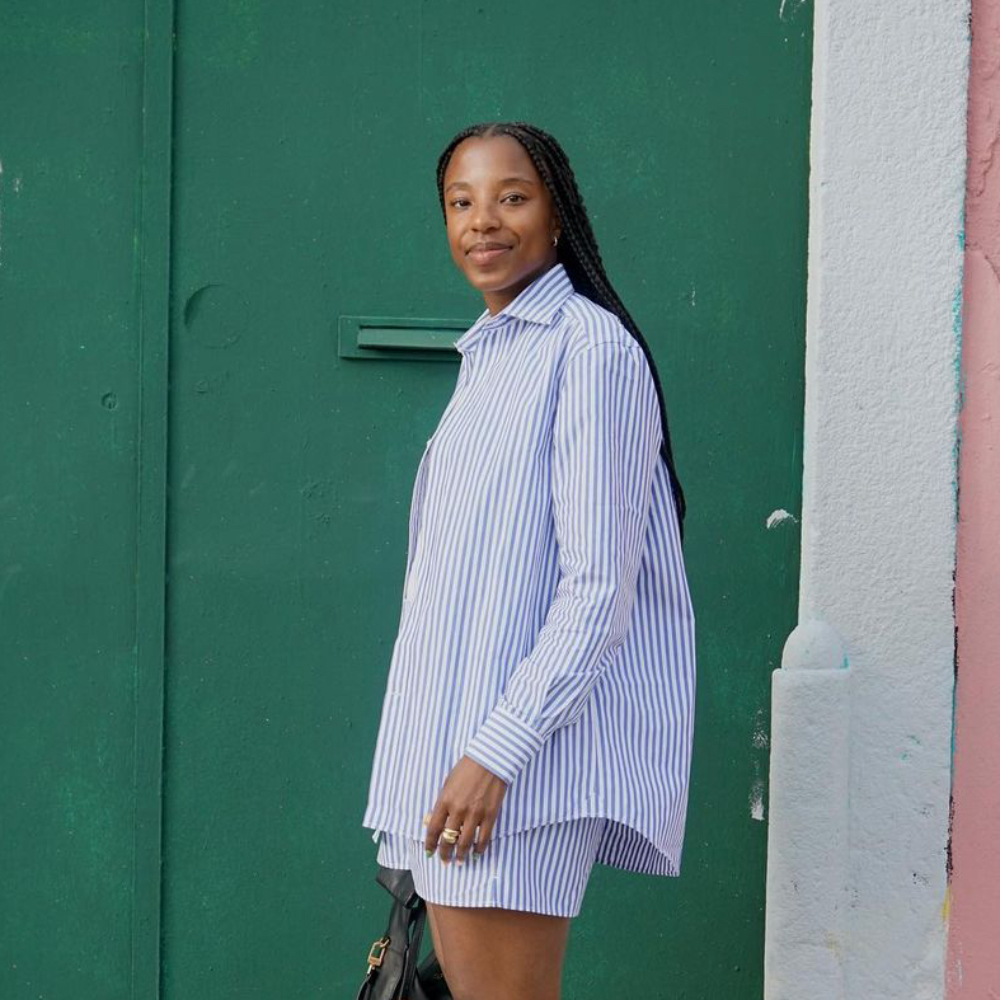 The Shirts Londoners Are Willing to Line Up and Down the Street For
The Shirts Londoners Are Willing to Line Up and Down the Street ForThe perfect button-down shirt does exist.
By Emma Spedding
-
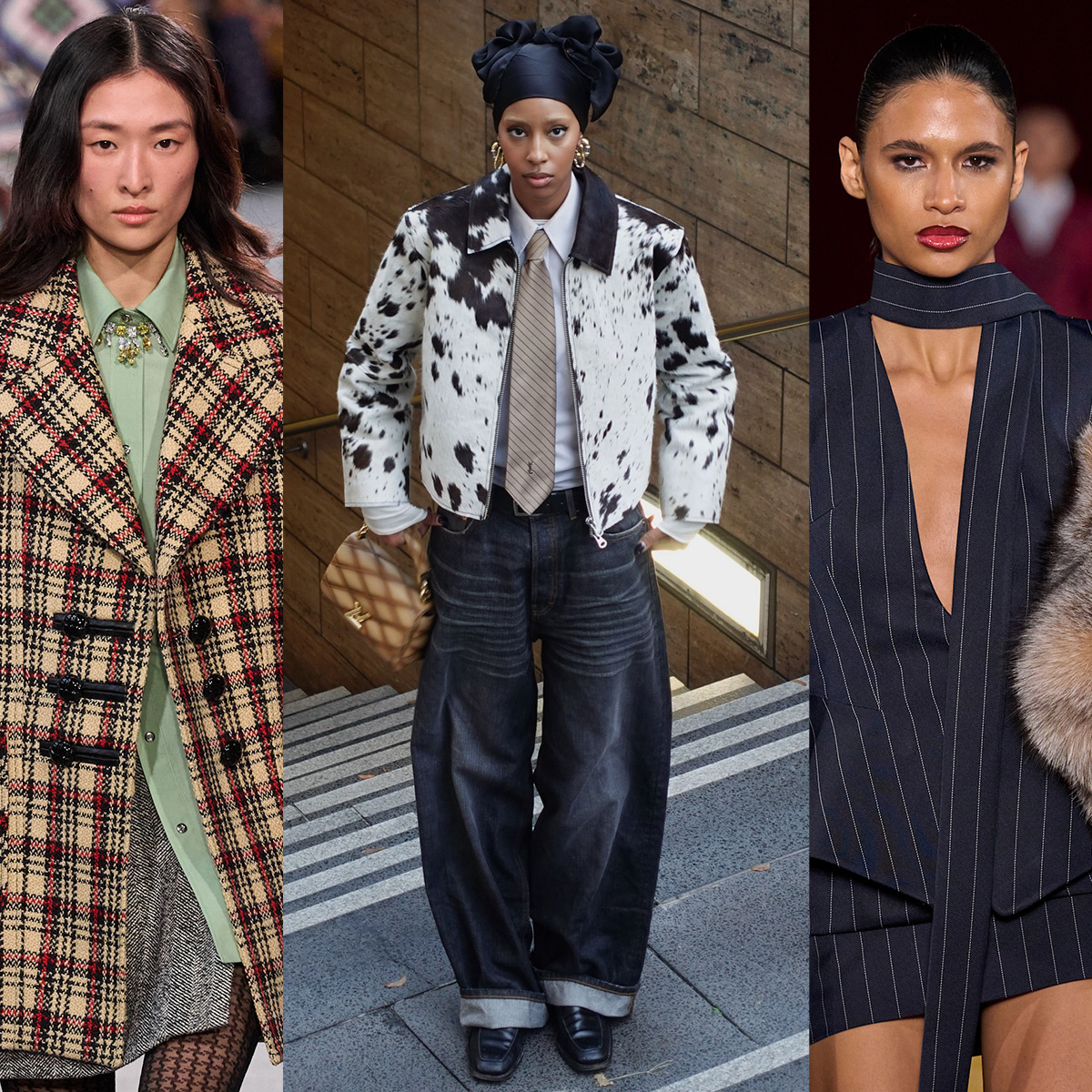 Goodbye, All-Black Outfits! 6 Print Trends Taking Over This Winter
Goodbye, All-Black Outfits! 6 Print Trends Taking Over This WinterSorry, minimalists.
By Jasmine Fox-Suliaman
-
 Jennifer Lopez Wore the Pretty Shirt Trend That Makes Even Y2K Jeans Look Elegant
Jennifer Lopez Wore the Pretty Shirt Trend That Makes Even Y2K Jeans Look ElegantWe love an elevated J.Lo outfit.
By Allyson Payer
